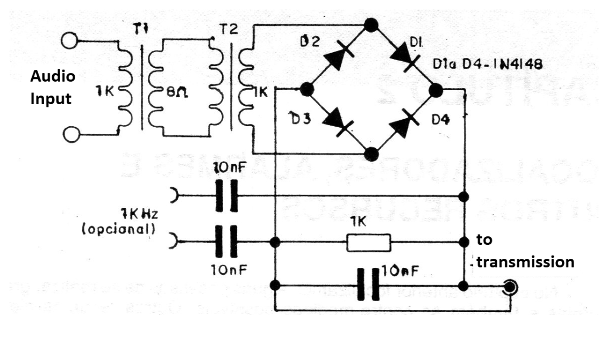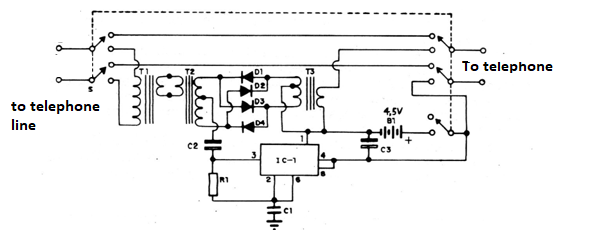This article is part of one of my spy books.
It is a circuit that modifies the frequency of the voice before transmitting it through the line, so that it becomes incomprehensible. A decoder must be used in the receiver.
In figure 1 we have a circuit for radio transmission of a scrambled signal.

At reception we take the receiver signal from the receiver and apply it to the identical circuit connected at the input of an amplifier.
In the circuit of figure 2 we have both the transmission and the reception of the signal by telephone.

In order to use the S-key is placed in the confidential position, after making the call with the S-key in the normal position. We should hear a tone from the oscillator indicating the operation of the system. If this happens, the conversation may continue as normal, confidential.
SEMICONDUCTORS
D1, D2, D3 and 04 - Diode1N4148
IC1 - 555 - integrated circuit
RESISTORS
R1 - 1k x 1/8 W (brown, black, red)
CAPACITORS
C1 - 100 nF x 250 V - epoxy or polyester
C2 - 2.2 uF x 63 V - electrolytic
C3 - 47 uF x 10 V - electrolytic
SEVERAL
T1, T2 and T3 - Push-pull output transistor type transistor for transistor (1 k x 2/8 ohm with center socket)
B1 - 4.5 V - 3 batteries or battery
S1 - 4 x 2 key



